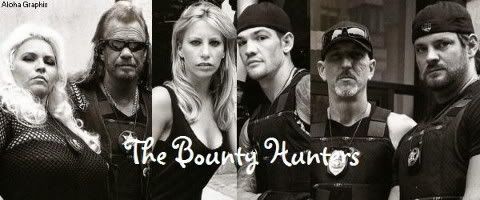Post by BountyGirl on Aug 28, 2010 21:50:46 GMT -5
Some people are more avid Fan Fiction writers then some, and some people may not realize that Fan Fiction has a language all its own. So I decided to post a list of some more common Fan Fiction Terminology.
If you can think of something I may not have listed feel free to add it to the list with definition.
Please take note that you are NOT required to use any of these terms. This is just put in place for those who may not understand what a writer is saying when they use the lingo
AH stands for All Human. This term is usually applied when the author takes fictional characters from an original supernatural story (the ones dealing with vampires, werewolves, aliens and so on) and turns them all into humans. This way, the characters are put in real-life situations and have to overcome problems many people face every day.
AN is an abbreviation for Author’s Note. The writers usually place them before or after their stories to have an opportunity to address their readers and explain their view of the characters, posting schedule or simply ask for a review.
AU (AR) means Alternative Universe (Reality). In stories marked as AU (AR), some of the settings and circumstances of the original plot line (sometimes all of them) are changed, which leads to a new character development, different sequence of events, etc. In other worlds, AU stories are an exercise of imagination: what would have happened Bella never jumped from the cliff in “New Moon”? Would Edward have come back to Forks? Would Bella and Jacob have gotten married? Every change, however slight, causes deviations from the original plot or canon, and the possibilities are endless.
Beta or Beta-reader is a person who helps writers proofread their stories before posting them online. According to Twilighted.net, the duties of a beta include monitoring for grammar and spelling mistakes, as well as improving the overall readability of the fan fiction piece. As stated on the site, “In essence, it is what the editor's responsibility is in the book publishing industry.”
Canon stories usually follow the plot of the original fiction and describe the characters as they originally appear without any major deviations. In fact, most of stories written in canon consist of either possible continuation of where the book (TV show, movie, etc) left off or depict so-called missing scenes.
Fandom – In general, this term refers to an entity of all supporters and admirers of a particular book, TV show, etc. Sometimes, a fandom may have a complex structure. For example, Angel/Buffy the Vampire Slayer fandom and Firefly/Serenity fandom can be united into a huge Joss Whedon’s creations fandom.
Fanfic or FF is nothing more than abbreviation of fan fiction.
OC means Original Character. You can see this term in the stories where the authors add the characters that were not present in the plot line of the book, TV show, movie the fanfic is based on.
OOC stands for Out of Character. In AU stories, the alternative settings provide for different character development which explains the dissimilarity between how the characters are portrayed in canon and how they behave in the OOC stories.
POV is Point of View. While the majority of stories contain traditional third-person narration, some authors prefer to use the vantage point of one or more characters to give the readers an insight to the characters’ thoughts and feelings.
RPF is an abbreviation of Real Person Fiction. For example, some pieces of fan fiction place the actors of a TV show or a movie, musicians and other famous people to an imaginary setting (a world-famous star meets a faithful fan and falls in love, usually).
R&R stands for Read and Review. The acronym can usually be seen in the author’s note to the readers as an attempt to enlarge readership and obtain constructive feedback from the audience.
Ship – No, it has nothing to do with any kinds of boats as one might think. ‘Ship’ is simply a shortened form of the word ‘relationship,’ used to describe the kind of character pairing featured in a fan fiction story. So-called ships are usually shown as first letter of one character’s name X (or /) First initial of another character. Additionally, many authors resort to combining the names of the characters into one (just like media referring to Brad Pitt and Angelina Jolie as Bradgelina). The most common examples include Spuffy (Spike +Buffy from Buffy the Vampire Slayer), Belward (Bella + Edward from Twilight saga), Dramione (Draco + Hermione from Harry Potter series) and so on.
WIP stands for Work In Progress. This term refers to any fan fiction story that has yet to be completed. Thus, if you don’t have enough patience to wait until the author finishes writing his or her story, WIP marking should serve as a warning sign!
***NOTE~~I retrieved this list from... www.examiner.com/fan-fiction-in-national/olga-burket
If you can think of something I may not have listed feel free to add it to the list with definition.
Please take note that you are NOT required to use any of these terms. This is just put in place for those who may not understand what a writer is saying when they use the lingo
AH stands for All Human. This term is usually applied when the author takes fictional characters from an original supernatural story (the ones dealing with vampires, werewolves, aliens and so on) and turns them all into humans. This way, the characters are put in real-life situations and have to overcome problems many people face every day.
AN is an abbreviation for Author’s Note. The writers usually place them before or after their stories to have an opportunity to address their readers and explain their view of the characters, posting schedule or simply ask for a review.
AU (AR) means Alternative Universe (Reality). In stories marked as AU (AR), some of the settings and circumstances of the original plot line (sometimes all of them) are changed, which leads to a new character development, different sequence of events, etc. In other worlds, AU stories are an exercise of imagination: what would have happened Bella never jumped from the cliff in “New Moon”? Would Edward have come back to Forks? Would Bella and Jacob have gotten married? Every change, however slight, causes deviations from the original plot or canon, and the possibilities are endless.
Beta or Beta-reader is a person who helps writers proofread their stories before posting them online. According to Twilighted.net, the duties of a beta include monitoring for grammar and spelling mistakes, as well as improving the overall readability of the fan fiction piece. As stated on the site, “In essence, it is what the editor's responsibility is in the book publishing industry.”
Canon stories usually follow the plot of the original fiction and describe the characters as they originally appear without any major deviations. In fact, most of stories written in canon consist of either possible continuation of where the book (TV show, movie, etc) left off or depict so-called missing scenes.
Fandom – In general, this term refers to an entity of all supporters and admirers of a particular book, TV show, etc. Sometimes, a fandom may have a complex structure. For example, Angel/Buffy the Vampire Slayer fandom and Firefly/Serenity fandom can be united into a huge Joss Whedon’s creations fandom.
Fanfic or FF is nothing more than abbreviation of fan fiction.
OC means Original Character. You can see this term in the stories where the authors add the characters that were not present in the plot line of the book, TV show, movie the fanfic is based on.
OOC stands for Out of Character. In AU stories, the alternative settings provide for different character development which explains the dissimilarity between how the characters are portrayed in canon and how they behave in the OOC stories.
POV is Point of View. While the majority of stories contain traditional third-person narration, some authors prefer to use the vantage point of one or more characters to give the readers an insight to the characters’ thoughts and feelings.
RPF is an abbreviation of Real Person Fiction. For example, some pieces of fan fiction place the actors of a TV show or a movie, musicians and other famous people to an imaginary setting (a world-famous star meets a faithful fan and falls in love, usually).
R&R stands for Read and Review. The acronym can usually be seen in the author’s note to the readers as an attempt to enlarge readership and obtain constructive feedback from the audience.
Ship – No, it has nothing to do with any kinds of boats as one might think. ‘Ship’ is simply a shortened form of the word ‘relationship,’ used to describe the kind of character pairing featured in a fan fiction story. So-called ships are usually shown as first letter of one character’s name X (or /) First initial of another character. Additionally, many authors resort to combining the names of the characters into one (just like media referring to Brad Pitt and Angelina Jolie as Bradgelina). The most common examples include Spuffy (Spike +Buffy from Buffy the Vampire Slayer), Belward (Bella + Edward from Twilight saga), Dramione (Draco + Hermione from Harry Potter series) and so on.
WIP stands for Work In Progress. This term refers to any fan fiction story that has yet to be completed. Thus, if you don’t have enough patience to wait until the author finishes writing his or her story, WIP marking should serve as a warning sign!
***NOTE~~I retrieved this list from... www.examiner.com/fan-fiction-in-national/olga-burket




